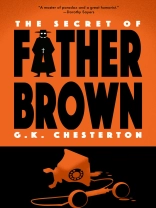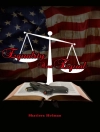G. K. Chesterton’s celebrity priest-detective returns in The Secret of Father Brown (1927), the fourth of five collections of short stories featuring Father Brown. Through his uncanny ability to anticipate the actions of others and his profound understanding of human nature, Father Brown uncovers the truth behind perplexing murders, elaborate robberies, and other acts of maleficence. Flambeau, once the most famous burglar in France and now a detective in England, makes a reappearance as Father Brown’s reformed friend and colleague in the two stories that frame the eight detective mysteries in this volume. Father Brown’s investigations involve such varied characters as the celebrated poet Osric Orm, the Robin Hood-like criminal Michael Moonshine, the goldfish-obsessed Peregrine Smart, the haggard theatre manager Mundon Mandeville, and the eccentric Lady Mounteagle. This collection includes ‘The Vanishing of Vaudrey, ‘ one of Chesterton’s most memorable and startling stories, and ‘The Chief Mourner of Marne, ‘ a story that vies with ‘The Sign of the Broken Sword’ for the position of Chesterton’s masterpiece.
This Warbler Classics edition contains an extensive biographical timeline.
Table des matières
Contents
The Secret of Father Brown
I. The Mirror of the Magistrate
II. The Man With Two Beards
III. The Song of the Flying Fish
IV. The Actor and the Alibi
V. The Vanishing of Vaudrey
VI. The Worst Crime In the World
VII. The Red Moon of Meru
VIII. The Chief Mourner of Marne
The Secret of Flambeau
Biographical Timeline
A propos de l’auteur
G. K. Chesterton (1874-1936) was a prolific English writer, philosopher, lay theologian, and literary and art critic. He is best known in mystery circles as the creator of the fictional priest-detective Father Brown and for the metaphysical thriller The Man Who Was Thursday. In 1895, at the age of twenty-one, Chesterton began working for the London publisher George Redway. A year later he moved to another publisher, T. Fisher Unwin, where he undertook his first work in journalism, illustration, and literary criticism. In addition to writing fifty-three Father Brown stories, Chesterton authored articles and books of social criticism, philosophy, theology, economics, literary criticism, biography, and poetry.












